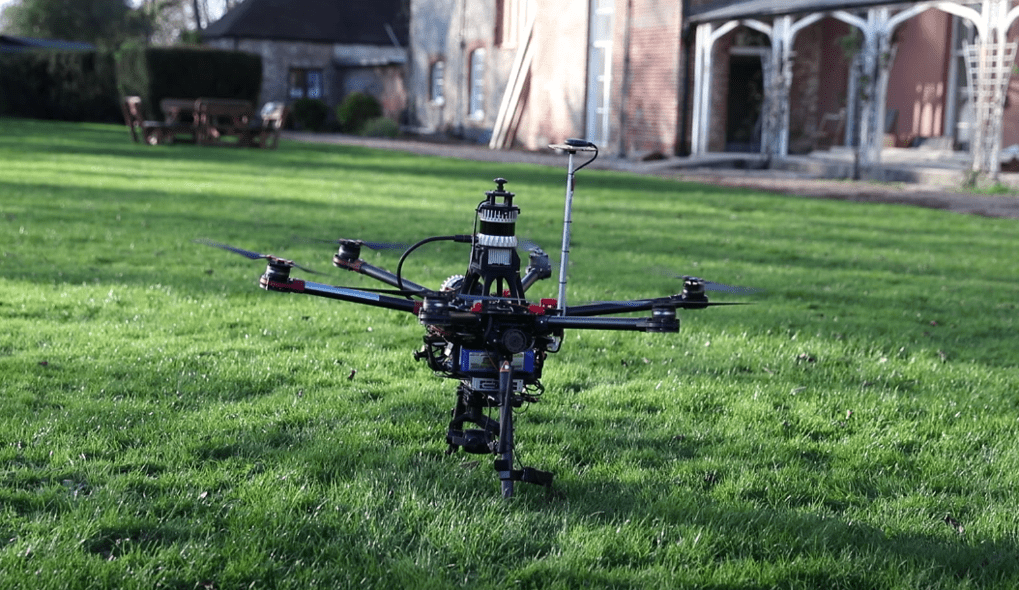Features - Development
Taking Drones Beyond Visual Line of Sight

John McKenna is CEO of sees.ai in this latest feature, he writes about how drones could help to address construction productivity, health & safety and environmental impact.
The construction industry is undergoing a once in a lifetime transformation. This once most traditional of industries is now breaking new ground by embracing automation, digitisation and remote working driven by the unique challenges it faces.
These include the forecast 20-25% decline in available labour within a decade, leading to a skills shortage that will arrest capacity and output; work on site is demanding and dangerous; projects are delivered through distributed diverse teams, mostly not on site; and Covid-19 is creating pressure around remote working. The bigger the project, the greater the risk. On £1bn plus projects, unforeseen issues can equate to losses of hundreds of millions of pounds.
Technology can undoubtedly help and construction companies are now actively seeking out technologies that can transform their day-to-day operations and make sites safer, more efficient and kinder to the environment. Indeed, investment in ConTech continues to soar and now contractors are as likely to hire a data scientist as a builder.
The value of aerial intelligence
One of the most difficult things to maintain on a construction project is real-time control, as this requires real-time data. Typically, data is collected by construction personnel walking a site on foot, manually gathering information as they go. But this process is labour-intensive, slow, hard to scale and doesn’t allow companies to react quickly to changes on the ground.
As such, it’s perhaps not a surprise that one such technology that’s ‘taken off’ over recent years is drone usage.
These Unmanned Aerial Vehicles (UAVs) allow sight of what was previously unseen. They combine agility and responsiveness with a unique ability to record vast amounts of aerial intelligence – from greatly enhanced imagery, mapping and visualisations to easy inspection of dangerous site areas without risk to human inspectors. For example, drones can carry out site surveys up to 400 times quicker than by traditional methods, offering cost savings of around 40%.
Construction firms are the fastest growing adopters of drones compared to any other industry sector. Indeed, the use of drones on job sites grew by a staggering 240% in 2018 alone.
Evolving regulation
Today, however, conventional drone services have to be delivered in accordance with visual line of sight (VLOS) regulations, meaning the pilot must be on site, keeping the drone in full view at all times.
Scaling these services requires building and coordinating a large team of drone pilots and managing their travel to and from mission sites. This approach is expensive, inconsistent, and challenging to resource – and, as a result, very difficult to scale.
So while abundant organisations across the industrial sector see the value in aerial intelligence, few have been able to access it at the scale and quality required. The missed opportunity cost is vast.
The challenge is to find a routine, safe, regulator-approved means of flying drones Beyond Visual Line of Sight in congested, urban environments and industrial sites.
The UK Civil Aviation Authority’s (CAA) Regulatory Sandbox is a postive step forward. The CAA has collaborated with a number of technology partners, including advanced drone systems, to explore frameworks under which regulatory approvals for routine ‘beyond visual line of sight’ (BVLOS) operations can be granted.
Skanska, and Skanska Costain and STRABAG, in partnership with HS2, are playing a vital role in testing drone systems on construction sites and railways over the coming months.
Covid-19 is compounding the urgency for the construction industry to rebuild momentum before the economic damage is too severe. We desperately need essential social assets – workplaces, schools, roads, railways, hospitals and homes – to continue to operate even if Covid-19 inhibits workforce availability for the whole of 2021.
The economic argument for enabling construction cannot be disputed. An infrastructure stimulus in the UK could create 1.24 million new jobs. A £11bn investment in the construction sector could produce a £33bn return.
Realising these ambitions requires greater use of commercial drones on-site: to accelerate remote inspection and monitoring, to enable site workers to work in smaller teams, or even alone, without risking their health and safety; and to give office workers the tools to access better information at their desks.
The economic recovery depends on it.
If you would like to read more like this, then please click here
Related Articles
More Features
- Why early MEP design collaboration holds the key to smarter buildings
24 Jun 25
Working closely is essential to ensure that all aspects of a building’s design contribute to
- Risk Vs Reward: Labour’s ambitious plans for stalled housing developments
10 Jun 25
Labour’s plans to allow local authorities to take control of stalled housing sites signals bold
- Insight: Digitalisation and the future of low-carbon housing
23 May 25
Digitalisation is reshaping homes, playing a pivotal role in reducing carbon emissions and enhancing energy






